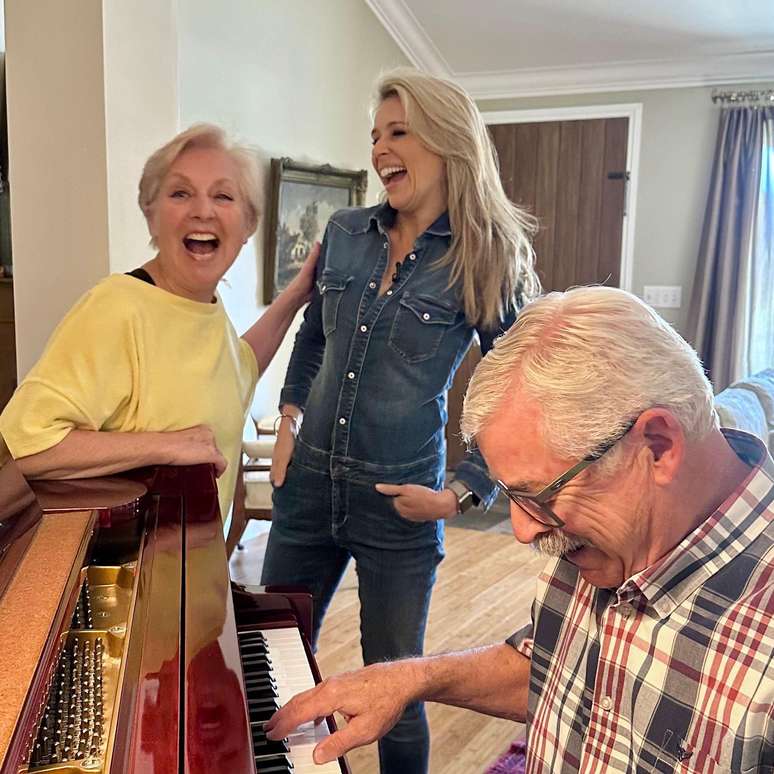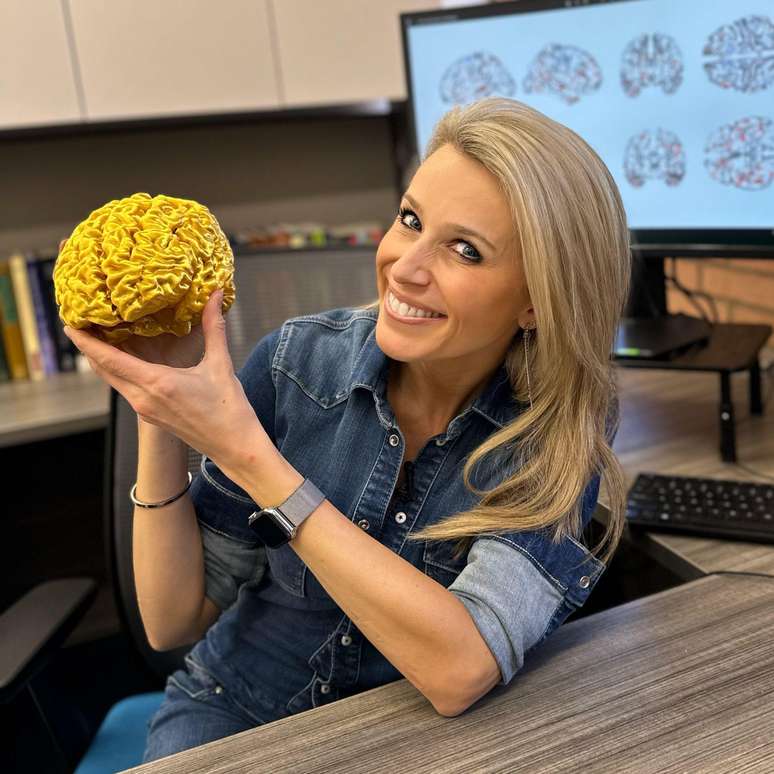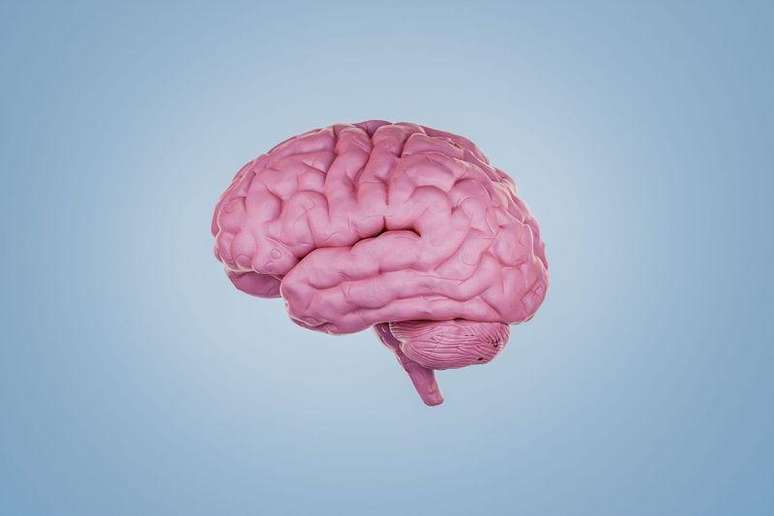BBC journalist Lara Lewington seeks to uncover the technological secrets that researchers say will unlock the formula for eternal youth.
We’ve long known that our lifestyle choices can help keep us healthier for longer. Now scientists are wondering whether new technologies could also help slow the aging process of our brains by monitoring what happens to them as we age.
On a sunny morning, 76-year-old Dutch woman Marijke and her husband Tom welcomed me for breakfast at their home in Loma Linda, an hour east of Los Angeles.
We were served oatmeal, chia seeds, and berries, but no sugary cereal or coffee: a breakfast as pure as the Loma Linda Mission.
The city is considered one of the world’s so-called Blue Zones, places where people have a higher-than-average life expectancy.
In Loma Linda, members of the city’s Seventh-day Adventist Church community are the longest-living.
They generally do not drink alcohol or caffeine, follow a vegetarian or even vegan diet, and consider it a duty to their religion to take care of their bodies in the best possible way.
It’s the “health message,” as they call it, that put them on the map: For decades, the city has been the subject of research into why its residents live better, longer.
Gary Fraser of Loma Linda University told me that members of the Seventh-day Adventist community can look forward to not only a longer life expectancy, but also a greater “health expectancy”—that is, time lived in good health—four to five more years for women and seven more years for men.
Marijke and Tom moved to Loma Linda later in life, but are now both firmly rooted in the community.

There are no big secrets in Loma Linda. Its citizens simply live a very healthy life, staying mentally stimulated and valuing the community spirit that usually builds around a religion.
There are regular lectures on healthy living, musical gatherings and gymnastics classes.
I spoke with Judy, who lives with 112 others in an “assisted living complex” where “you can always have heart-opening and brain-opening conversations,” she told me.
“What I didn’t realize was how important socialization is to the brain… without it, our brains seem to shrink and disappear,” Judy said.
Science has long recognized the benefits of social interactions and avoiding loneliness.
But it is now also possible to identify which brains are aging faster than they should, so that they can be monitored and, in the future, better treated preventively.
As we move toward more personalized, predictable, and preventative healthcare models, early diagnosis will be crucial across all areas of healthcare, driven by the incredible possibilities of artificial intelligence and large-scale data collection and collation.
Andrei Irimia, an associate professor of gerontology and computational biology at the University of Southern California, showed me computer models that can assess how our brains age and predict when they will decline.
To create them, he used MRI scans and other data from 15,000 people and the power of artificial intelligence to understand the trajectory of healthy aging brains and those with disease processes, such as dementia.
“It’s a very sophisticated way of looking at patterns that we don’t necessarily notice as humans, but the AI algorithm can detect them,” he said.
Professor Irimia, of course, examined my head.
I had had an MRI before my appointment, and after reviewing the results, the professor told me that my brain age was eight months older than my chronological age (although, apparently, the part that controls language wasn’t that I was aging that fast. I could have told him that myself).
The professor added that the results are within a margin of error of two years.
Private companies are also starting to commercialize this technology.
The American company Brainkey offers the service in several clinics around the world. Its founder, Owen Philips, told me that undergoing an MRI should become easier in the future.
“It’s becoming much more affordable for people to have an MRI, and the images produced are getting better and better,” he said.
“Technology is getting to the point where we can see things much earlier than we could in the past. And that means we can understand exactly what’s going on in an individual patient’s brain. With artificial intelligence, we’re in a position to do that.”
And I was even presented with a 3D print of my brain.

Contrary to what Professor Irimia’s analysis of my MRI told me, Brainkey’s estimate reduced the biological age of my brain by one year.
The purpose of the test is not only to provide a more accurate assessment of the type of treatment, but also to be able to quantify the improvement obtained from the interventions.
Significant increases in life expectancy over the past 200 years have given rise to a number of age-related diseases.
I wonder if we all lived longer and longer, dementia might come knocking on all our doors.
Professor Irimia said it was a theory that many had studied, although not proven, adding that the aim was to find a way to delay the onset of dementia beyond our average life expectancy.
And this brings us back to where we started. All scientists and doctors, as well as the inhabitants of the so-called Blue Zones, say that lifestyle is fundamental.
A good diet, staying active, mentally stimulated and happy are essential for our brains to age well.
There is another important factor, according to Matthew Walker, a professor of neuroscience and psychology at the University of California, Berkeley, and author of the best-selling book Why we sleep (Why We Sleep, in free translation).
“Sleep is the most powerful thing you can do each day to restore the health of your brain and body,” she said.
“There is not a single function of your mind that is not either wonderfully enhanced when you sleep or demonstrably impaired when you don’t sleep enough,” he added.
He talked about our brain’s cleanup system, which works during sleep to clear out beta-amyloid and tau proteins—”two of the main culprits in Alzheimer’s disease.”
Changes in sleep patterns are also associated with dementia. Professor Walker said this is not only seen in people in their 60s and 70s, but can be seen in people’s 30s.
Therefore, identifying these changes through sleep monitoring could become a “midlife prevention model”.
Fauna Bio, a biotechnology company outside San Francisco, is collecting data on squirrels during and after hibernation.
As is known, during this state of torpor, the body temperature of squirrels drops and their metabolic rate is reduced to only 1% of normal.
During this time, they appear to be able to regenerate neurons and recreate the connections that their brains had lost.
The company’s goal is to try to create drugs that can replicate this process in humans, without them having to spend half the year hibernating underground. Although that’s what some people want.
Untreated depression has also been shown to increase the risk of dementia.
Stanford University Professor Leanne Williams has discovered a way to “visualize” some forms of depression in the brain using MRI to see if the treatment works.
This could help scientists better understand the causes of mental health problems like depression, as well as provide a way to quantify a patient’s treatment progress.
Few have relied more on science to achieve longevity than Bryan Johnson, the tech entrepreneur who is spending millions trying to reverse his biological age.
Dozens of supplements, 19-hour fasts a day, exercises that make him feel like he’s about to explode, and a series of (sometimes controversial) treatments are what he hopes can turn back the clock.
But as Mildred, 103, whom I visited in Loma Linda, emphatically said: “You absolutely have to be very careful about your diet, that’s true, but I don’t like, ‘You have to do this, this, and this, and absolutely not touch that!’
She thinks it’s more important to enjoy life a little and, let’s face it, she should know that.
This report was translated and reviewed by our journalists using artificial intelligence assistance in translation, as part of a pilot project.
Source: Terra
Rose James is a Gossipify movie and series reviewer known for her in-depth analysis and unique perspective on the latest releases. With a background in film studies, she provides engaging and informative reviews, and keeps readers up to date with industry trends and emerging talents.





-1hrj79c5c7oma.jpg)

